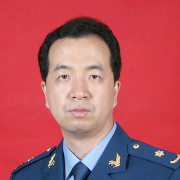- 北京空军总医院医生张红超为南木...
- 报摘
- 人工心脏的研究现状
- 6例脉搏氧饱和度监测导致手指损...
- 死心复活重植人体
- 产前超声检查的相关伦理学思考-...
- 新华网报道 空军总医院心脏外科...
- TriVascular Ova...
- 减肥.保健三步曲
- 高血压,肾动脉狭窄
- 左心室节段划分方法
- 中药很可怕
- 胸主动脉夹层术后五个月
- 优质护理服务在不同民族批量先心...
- 最重的春节礼物
- 五十四?的健康知?,您做到??...
- PDA合并脑血管疾病的观察与护...
- 五十四?的健康知?,您做到??...
- 血管疾病专业组简介
- 血管加压素对心功能的抑制作用及...
- WHO生活质量定义
- 主动脉瘤手术成功支架后为什么拍...
- 慢性心力衰竭合并缓慢心律失常诊...
- 心力衰竭患者的运动锻炼:实践指...
- 房缺合并肺动脉狭窄
- 卡方值表
- MitraClip Devic...
- 18个月。先天性心脏导管未闭.
- 18个月,先天性室间隔膜部缺损
- 医道之圣,何以正之?
- 2010年12月21日,美国心...
- 前列地尔联合西地那非在房缺重度...
- 先天性心脏病合并肺动脉高压外科...
- Role of compute...
- 文献综述写作结构加句型(总结实...
- 心病患儿围手术期心理护理体会
- 多种方法治疗一例双下肢动脉闭塞...
- 先心病室间隔缺损7.5毫米有肺...
- 胸外伤治疗进展
- 2009年9月26日降主动脉夹...
- 满月宝宝患先心病求准确定论
- 贫困家庭宝宝5个月在本地检查为...
- 体外循环心内直视手术后并发传导...
- 40天婴儿先心病室缺8.9MM...
- 风心病二尖瓣狭窄
- 肥厚性心肌病会危及生命吗怎样治...
- 经皮介入治疗主动脉瓣狭窄
- 普通病房甲型H1N1流感的防控...
- 甲型H1N1流感流行期间洁净手...
- Identification ...
- 多次多部位自体骨髓干细胞移植手...
- 感染性心内膜炎个案化处理的体会
- 血小板降低的治疗
- 动脉瘤
- 胸主动脉夹层动脉瘤
- 心脏停搏下手术冠脉阻力及其内皮...
- 心房纤颤624例临床分析
- 指导论文 多种方法治疗一例双...
- 我们的生命能超越多少极限?
- 相关链接
- NHLBI专题工作小组对心脏外...
- TAVI
- 作者:张红超|发布时间:2010-05-08|浏览量:1115次
Transcatheter Aortic Valve Replacement
There’s always a breakthrough technique on the horizon at Medical City Heart. And this time it’s a revolutionary procedure for patients who suffer from critical aortic stenosis (diseased aortic valve.) Medical City has been selected as one of the first three centers in the United States participating in the PARTNER (Placement of AoRTic traNscathetER valvues} evaluating the Edwards SAPIEN transcatheter heart valve, developed by Edwards Lifesciences, in patients who are considered high-risk or non-operable for conventional open-heart valve surgery. 空军总医院心血管外科张红超
Why transcatheter?
The new heart valve is implanted without open-heart surgery, using minimally invasive techniques. First, the Edwards SAPIEN transcatheter heart valve is loaded onto a balloon delivery catheter. Then it is threaded through the patient’s circulatory system from the leg (transfermoral approach) or inserted between the ribs (transapical approach) directly into the heart and positioned to replace the patient’s diseased valve. Both procedures are performed on a “beating heart,” without the need for cardiopulmonary bypass and its associated risks.
Annually, some 200,000 people in the United States need a heart valve. But nearly half of them do not receive a new valve for a variety of reasons. Advancements in transcatheter technologies offer a promising option for the large number of high-risk patients suffering from severe aortic stenosis.
Who is a candidate for the procedure?
Specific patients who are candidates for the trial include:
Critical aortic stenosis
Advanced age
Previous sternotomy for cardiac procedures
Previous radiation to the chest
Porcelain (heavy calcification) of the ascending aorta
Frailty or debility
A Society of Thoracic Surgeons (STS) predicated risk of mortality of conventional surgery >10%
Cerebral or peripheral vascular disease, renal insufficiency or other significant co-morbidities
Turned down for conventional valve replacement surgery
Conventional Aortic Valve Surgery
When considering transcatheter aortic valve replacement, it is helpful to understand conventional aortic valve surgery.
During aortic valve surgery, the aortic valve is generally replaced, but certain rare conditions may be repaired. The results of your diagnostic tests, the structure of your heart, your age, the presence of other medical conditions and other factors will be considered to determine whether aortic valve repair or replacement is the best treatment approach for you.
Aortic valve surgery can be performed using traditional heart valve surgery or minimally invasive approaches.
During traditional aortic valve surgery, a surgeon makes a 6- to 8-inch incision down the center of your sternum, and part or all of the sternum (breastbone) is divided to provide direct access to your heart. The surgeon then replaces or occasionally repairs your abnormal heart valve or valves.
Minimally invasive aortic valve surgery is a type of aortic valve repair surgery performed through smaller, 2- to 4-inch incisions. Minimally invasive surgery reduces blood loss, trauma, and length of hospital stay.
Most patients who require isolated aortic valve surgery are candidates for minimally invasive aortic valve surgery, but your surgeon will review your diagnostic tests and determine if you are a candidate for this type of surgery.
Aortic Valve Repair
While the aortic valve is usually replaced, aortic valve repair may be an option.
Bicuspid aortic valve repair
A bicuspid aortic valve may be repaired by reshaping the aortic valve leaflets allowing the valve to open and close more completely. Bicuspid aortic valve repair may be an option to treat leaking valves, but it cannot be used to treat a stenotic or narrowed bicuspid aortic valve.
Bicuspid aortic valve repair can be performed using a minimally invasive surgical technique. The aortic valve surgery is technically difficult and should be performed by a surgeon with experience repairing aortic valves.
Repair of an enlarged aorta
Aortic valve disease is often associated with enlargement (aneurysm) of the ascending aorta, the initial portion of the aorta (the main blood vessel in the body that originates from the aortic valve).
If the enlargement of the aorta is substantial (usually above 4.5 or 5 cm in diameter), this part of the aorta may need to be replaced. The replacement is done at the time of aortic valve repair or replacement. In patients who have leaky aortic valve and an enlarged aorta, a special procedure (David procedure) can be performed. The David procedure allows surgeons to repair the aortic valve and simultaneously replace the enlarged ascending aorta.
Repair of valve tears or holes
In addition, if the valve leaflets have tears or holes, the surgeon can patch these with tissue patches.
Aortic Valve Replacement
If valve repair is not an option, your surgeon may replace the valve. The native (original) valve is removed and a new valve is sewn to the annulus of your native valve. The new valve can either be mechanical or biological.
Biological valve replacement
In valve replacement surgery, the majority of aortic valves are replaced with a bioprosthesis. Biological valves (also called tissue or bioprosthetic valves) are made of tissue, but they may also have some artificial parts to provide additional support and allow the valve to be sewn in place.
Biological valves can be made from pig tissue (porcine), cow tissue pericardial (bovine), or pericardial tissue from other species.
These valves are easy to insert, durable (lasting from 15 to 20 years), and allow patients to avoid lifetime use of anticoagulants (blood thinning medications.)
Homograft (also called allograft) aortic valve replacement
A homograft is an aortic or pulmonic valve that has been removed from a donated human heart, preserved, treated with antibiotics, and frozen under sterile conditions. Homografts are ideal valves for aortic valve replacement, especially when the aortic root is diseased or endocarditis (infection) is present.
Mechanical valves replacement
Mechanical valves are made completely of mechanical parts, which are non-reactive and tolerated well by the body. The bileaflet valve is used most often. It consists of two pyrolite (qualities similar to a diamond) carbon leaflets in a ring covered with polyester knit fabric.
All patients with mechanical valve prostheses need to take an anticoagulant medication, such as warfarin (Coumadin), for the rest of their life to reduce the risk of blood clotting and stroke.
Ross Procedure (also called Switch Procedure)
The Ross operation is usually performed on patients under age 40 to 50 who want to avoid lifetime use of anticoagulants (blood thinning medications) after surgery. During this procedure, the patient"s normal pulmonary valve is removed and used to replace the diseased aortic valve. The pulmonary valve is then replaced with a pulmonary homograft.
Transcatheter Aortic Heart Valve Replacment:
Transfemoral Approach
The transfemoral (leg artery) approach for minimally-invasive transcatheter aortic heart valve replacement utilizes the Edwards SAPIEN transcatheter heart valve, which combines balloon expandable stent technology with a bovine (cow tissue) pericardial bioprosthetic tissue valve. The valve is mounted on the RetroFlex transfemoral valve delivery system, which is inserted into the femoral (leg) artery, tracked over the aortic arch and delivered to the site of the patient’s diseased valve ? all without cardiopulmonary bypass.
Once it reaches the site of the diseased or “stenotic” valve, the Edwards SAPIEN transcatheter heart valve (available in two sizes, 23 mm and 26 mm), is positioned and deployed across the patient’s stenotic valve.
The physician utilizes echocardiographic and fluoroscopic guidance for visualization during the valve delivery. This minimally-invasive approach is intended to be performed under local and/or general anesthesia.
Prior to implantation, the valve is carefully mounted and crimped onto the balloon delivery catheter. The valve/balloon assembly is inserted into the femoral artery and delivered with the Retroflex transfemoral delivery system to the site of the patient"s native diseased valve.
Transcatheter Aortic Heart Valve Replacment:
Transapical approach
The transapical (through the ribs) approach for minimally-invasive transcatheter aortic heart valve replacement utilizes the Edwards SAPIEN transcatheter heart valve, which combines balloon expandable stent technology with a bovine (cow tissue) pericardial bioprosthetic tissue valve. The valve is mounted on the Ascendra transapical valve delivery system, which is inserted through an incision between the ribs into the apex of the left ventricle and delivered to the site of the patient’s diseased valve.
Once it reaches the site of the diseased or “stenotic” valve, the Edwards SAPIEN transcatheter heart valve (available in two sizes, 23 mm and 26 mm), is positioned and deployed across the patient’s stenotic valve.
The physician utilizes echocardiographic and fluoroscopic guidance for visualization during the valve delivery. This minimally-invasive approach is intended to be performed under general anesthesia.
Prior to implantation, the valve is carefully mounted and crimped onto the balloon delivery catheter. The valve/balloon assembly is inserted through the ribs, into the apex of the left ventricle and delivered with the Ascendra transapical delivery system to the site of the patient"s native diseased valve.
TA的其他文章:




